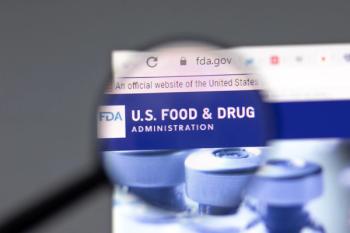
- Applied Clinical Trials-07-01-2008
- Volume 0
- Issue 0
Chartering a Data Safety Monitoring Board
Detailed charter defines the roles of the group and their relationships with other study team members-and it's available inside as a word document that you can download for use.
Download a DSMB template charter to use in your own clinical trials
here.
Safety monitoring is an essential component of all clinical trials. Numerous groups are responsible for the safety of participants, including study investigators and coordinators, study sponsors, Institutional Review Boards (IRBs), and Ethics Committees (ECs). A unique responsibility is assigned to the Data Safety Monitoring Board (DSMB), also known as a Data Monitoring Committee (DMC) or Data and Safety Monitoring Committee (DSMC). That responsibility is independent oversight and assurance of the safety of trial participants, both at the individual subject level and in aggregate. In 2006, the United States Food and Drug Administration issued a Guidance1 concerning the structure and function of these bodies.
(Photography: Getty Images)
Board responsibilities
As described in the FDA Guidance, the DSMB is an independent group responsible for the ongoing review of a clinical trial and for making recommendations concerning the continuation, modification, and termination of the trial as it is being conducted.
A typical DSMB consists of clinical and statistical experts familiar with the area of study along with ethicists, patient advocates, and/or lay persons depending on the nature of the study. The key responsibility of the DSMB is to ensure the safety of human subjects, and an important secondary function is to ensure trial and data integrity. All clinical studies require monitoring at this level, and it has become increasingly common for a formal DSMB to be established to assume this function.
A DSMB is needed whenever there are clinical endpoints of mortality or major morbidity, a trial evaluates a therapy for which the safety record is not established, and a vulnerable patient population is being studied, such as infants or the elderly. The independent nature of the DSMB is critically important to its mission, as it allows the sponsor and others involved in trial management to continue in their functions without the presence or perception of bias. We refer the reader to the FDA Guidance for additional details about the roles, responsibilities, and examples of DSMB functions.
Valuable charter
While the FDA Guidance briefly addresses the concept of DSMB charters, a detailed, template-based approach inclusive of the critical elements useful for constructing a DSMB charter was not published. Given that many groups will now have responsibility for establishing or managing DSMBs, we believe such a template charter may be of value.
In our experience, the DSMB charter has proven to be the critical written document that specifies the composition and operations of the DSMB. The charter also defines the relationships between the DSMB and other parties responsible for study oversight, including the sponsor, clinical research organizations, steering committee, study investigators, IRBs/ECs, appropriate regulatory agencies, and the DSMB management organization (when applicable). Since the purpose of the charter is to specify a clear operational plan for the DSMB in the context of these other parties, the charter should be developed by collaboration among these entities, especially the DSMB management organization (or the DSMB itself in the absence of a management organization) and the sponsor.
We developed our template charter based upon over 30 years of combined experience with the establishment and operation of DSMBs and in the design, development, and management of more than 100 clinical trials. The template contains the essential components necessary for convening a competent and knowledgeable DSMB as described in the FDA Guidance document. These components include:
- Delineation of the roles and responsibilities of the DSMB
- Membership requirements inclusive of qualifications related to independence and conflict of interest
- Meeting schedule and format
- Provisions for both open and closed DSMB meetings
- Safety (and efficacy) data reporting and the analysis plan
- Delineation of predefined criteria for early termination
- Communication channels between the DSMB and study sponsor
- Confidentiality requirements.
Template resource
While several publications antedating the FDA Guidance addressed the components of the DSMB charter and provided templates,2,3 we believe that additional development and refinement of the critical concepts, coupled with a downloadable template resource, would further facilitate best practice.
Since the inception of this template charter, it has been used for 18 clinical trials, including trials sponsored by industry and studies self-funded by clinicians. Our experience with the template has resulted in improved communications between the sponsor and DSMB, as well as the establishment of clear and reasonable expectations of all parties. It is in this spirit that the template charter is provided on the Applied Clinical Trials Web site to interested parties to adapt to the specific needs of a given clinical investigation.
Download the DSMB template charter
here.
Donald Cutlip, MD, is an associate professor of medicine at Harvard Medical School, Beth Israel Deaconess Medical Center, Harvard Clinical Research Institute, Boston, MA. James Tcheng, MD, is professor of medicine and an associate professor of community and family medicine at Duke Clinical Research Institute, Duke University Health System, Durham, NC. Rebecca Budreau, PharmD, is associate director of project management at Clinimetrics Research Associates, West Lafayette, IN. Neal Fearnot, PhD, is president and Scott Snyder, PhD, is manager, biostatistics and data management, of MED Institute, Inc., West Lafayette, IN. Willis Tacker,* MD, PhD, is professor of basic medical sciences at Purdue University and Indiana University School of Medicine and Chair of the DSMB of MED Institute, Inc., 1 Geddes Way, West Lafayette 47906, email:
*To whom all correspondence should be addressed.
References
1. Food and Drug Administration, Guidance for Clinical Trial Sponsors on the Establishment and Operation of Clinical Trial Data Monitoring Committees (FDA, Rockville, MD, March 2006).
2. S. Ellenberg, T. Fleming, D. DeMets, "Responsibility of the Data Monitoring Committee and Motivating Illustrations," in Data Monitoring Committees in Clinical Trials: A Practical Perspective, S. Ellenberg, T. Fleming, and D. DeMets (John Wiley and Sons Ltd., West Sussex, England, 2002), pp. 19-43.
3. DAMOCLES Study Group, "A Proposed Charter for Clinical Trial Data Monitoring Committees: Helping Them to Do Their Job Well," Lancet, 365, 711-722 (2005).
Articles in this issue
over 17 years ago
Update on Russia Trialsover 17 years ago
Business and People Update July 2008over 17 years ago
July Global Newsover 17 years ago
Where's the Trial Dataover 17 years ago
A Dow Jones for Sitesover 17 years ago
ICREL Assesses EU Trials Directiveover 17 years ago
Remembering Recruitmentover 17 years ago
Joint Lab Venture Targets Chinaover 17 years ago
Benchmarking Sitesover 17 years ago
Metrics Gain TractionNewsletter
Stay current in clinical research with Applied Clinical Trials, providing expert insights, regulatory updates, and practical strategies for successful clinical trial design and execution.






.png)



.png)



.png)
.png)
